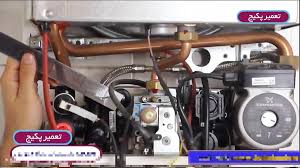In the past few years of research on instructional free todo list has resulted in a clearer vision of how technology can affect teaching and learning. Today, almost every school in the United States of America uses technology as a part of teaching and learning and with each state having its own customized technology program. In most of those schools, teachers use the technology through integrated activities that are a part of their daily school curriculum. For instance, instructional technology creates an active environment in which students not only inquire, but also define problems of interest to them. Such an activity would integrate the subjects of technology, social studies, math, science, and language arts with the opportunity to create student-centered activity. Most educational technology experts agree, however, that technology should be integrated, not as a separate subject or as a once-in-a-while project, but as a tool to promote and extend student learning on a daily basis.
Today, classroom teachers may lack personal experience with technology and present an additional challenge. In order to incorporate technology-based activities and projects into their curriculum, those teachers first must find the time to learn to use the tools and understand the terminology necessary for participation in projects or activities. They must have the ability to employ free todo list to improve student learning as well as to further personal professional development.
Instructional technology empowers students by improving skills and concepts through multiple representations and enhanced visualization. Its benefits include increased accuracy and speed in data collection and graphing, real-time visualization, the ability to collect and analyze large volumes of data and collaboration of data collection and interpretation, and more varied presentation of results. Technology also engages students in higher-order thinking, builds strong problem-solving skills, and develops deep understanding of concepts and procedures when used appropriately.
Technology should play a critical role in academic content standards and their successful implementation. Expectations reflecting the appropriate use of technology should be woven into the standards, benchmarks and grade-level indicators. For example, the standards should include expectations for students to compute fluently using paper and pencil, technology-supported and mental methods and to use graphing calculators or computers to graph and analyze mathematical relationships. These expectations should be intended to support a curriculum rich in the use of technology rather than limit the use of technology to specific skills or grade levels. free todo list makes subjects accessible to all students, including those with special needs. Options for assisting students to maximize their strengths and progress in a standards-based curriculum are expanded through the use of technology-based support and interventions. For example, specialized technologies enhance opportunities for students with physical challenges to develop and demonstrate mathematics concepts and skills. Technology influences how we work, how we play and how we live our lives. The influence technology in the classroom should have on math and science teachers’ efforts to provide every student with “the opportunity and resources to develop the language skills they need to pursue life’s goals and to participate fully as informed, productive members of society,” cannot be overestimated.


